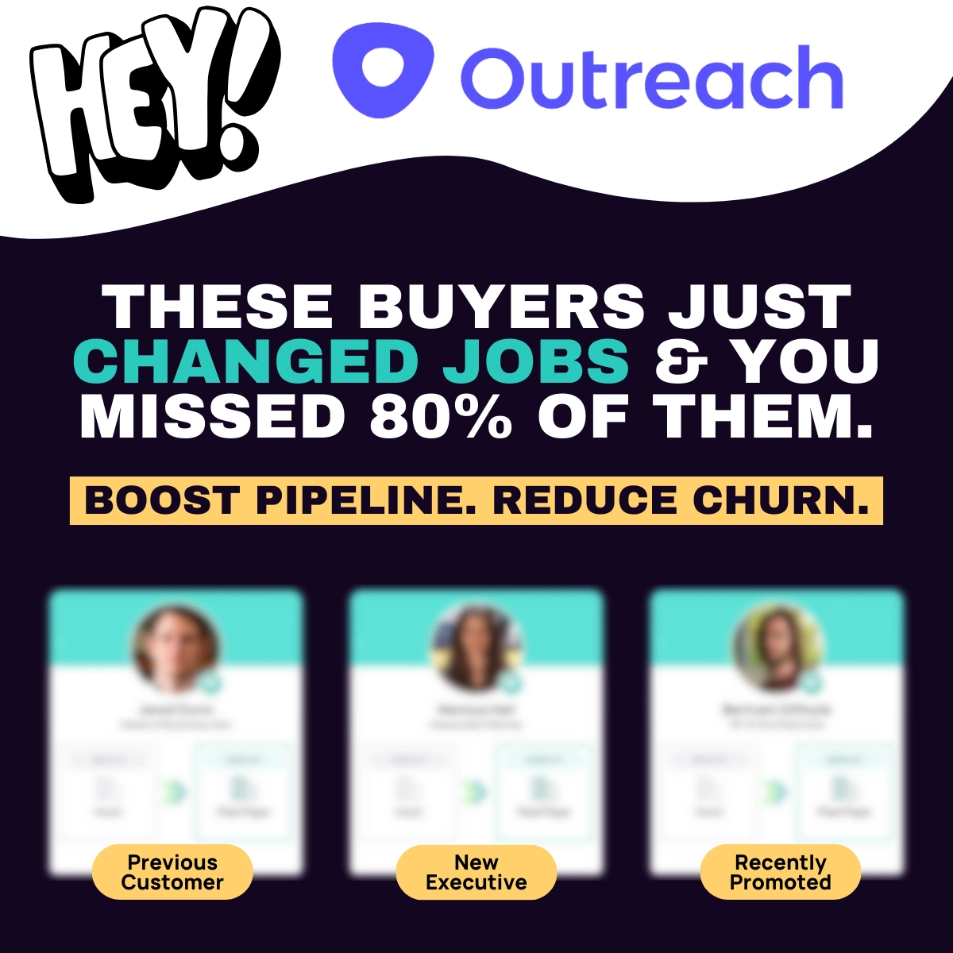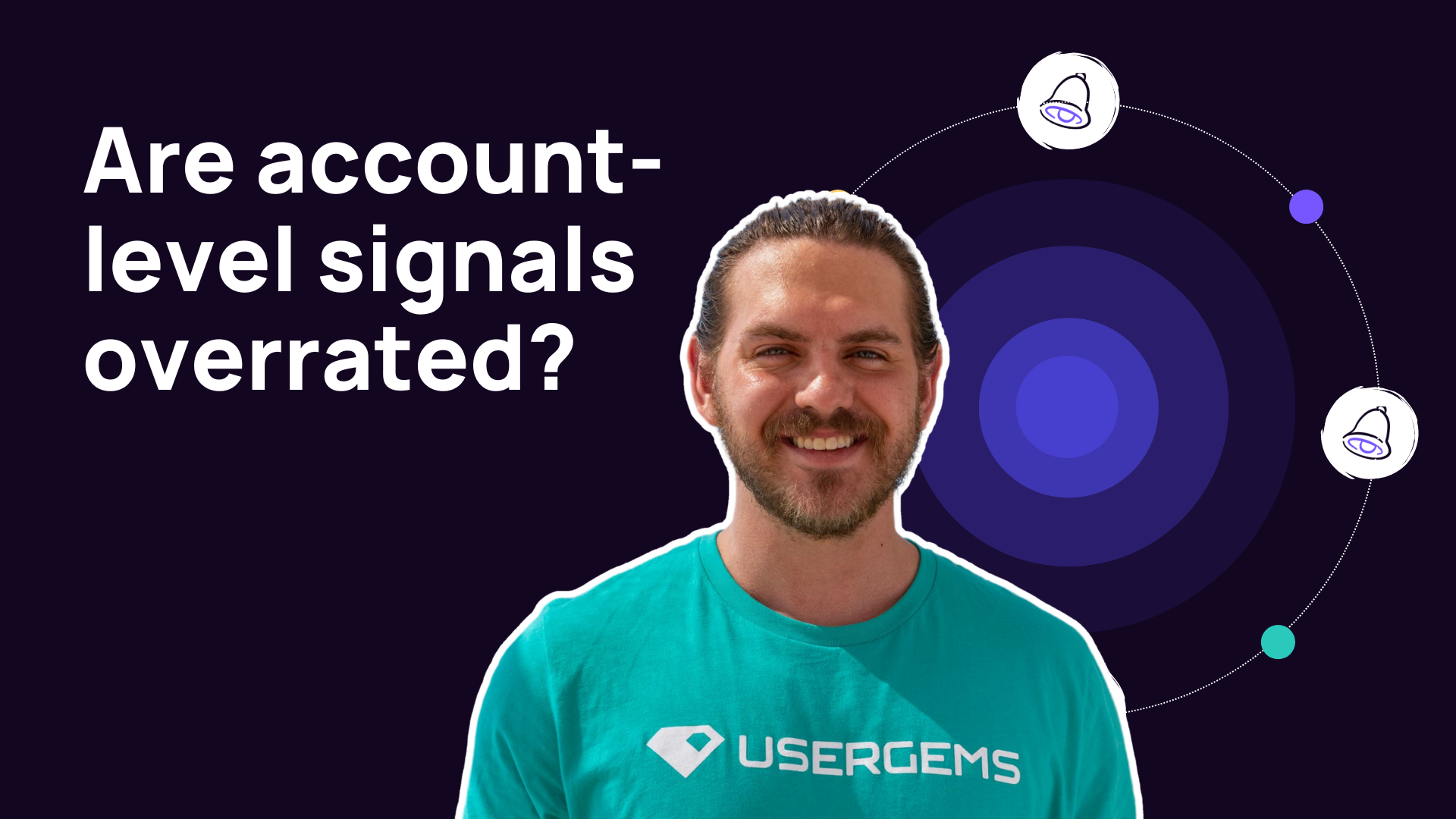
Account-based marketing (ABM) attribution is hard. In fact, 81% of B2B marketers running ABM campaigns say quantifying results is their biggest challenge.
Essentially, ABM involves sales and marketing teams focusing their efforts on going after specific accounts together — using multiple channels to target them with hyper-personalized messaging.
Since numerous channels are involved in the marketing efforts, ABM attribution is often difficult to track. Fortunately, though, it’s not impossible.
On a recent Women in B2B Marketing podcast, Trinity Nguyen, our VP of Marketing, UserGems, shared how she measures results for the ABM program we run.
It turns out, account-based attribution boils down to:
- A deep understanding between the marketing and sales teams around which metrics to track
- And, taking the warmest paths to target accounts so their odds of converting are high
If you’re looking to drive higher close rates with your ABM campaigns, add UserGems to your tech stack to track customer job changes. This way, you can strategically go after warm leads that have previously used or evaluated your tool, shortening the sales cycle, and increasing close rates. Request a demo here.
Is ABM attribution real?
It takes a minimum of eight touches — across different channels — for potential buyers to agree to a discovery call. To add, the customer journey is never linear, which makes it nearly impossible to credit one channel as the winning source for lead generation.
Trinity agrees:

What’s more, ABM campaigns use multiple marketing channels to target a specific group of buyers. This further contributes to the challenge of attributing success to just 1-2 channels.
The good news though? Measuring your account-based marketing campaigns’ success isn’t impossible. Remember two things:
- Never go after vanity metrics — more on this in the next section
- Pre-define which metrics the marketing and sales teams should measure for attribution
As Trinity notes:

The ABM metrics you shouldn’t focus on
At UserGems, we run a 3-month account-based attribution period, using our tool to source warm leads. These leads are:
- Folks who have taken on a new role and are in the market for buying software in the first 100 days of a new job.
- Or champions (read: alumni customers). As in people who have used our tool in a previous role but have moved to a new company.
Not only does targeting these warm leads help us beat pipeline anxiety but it also maximizes our odds of closing more deals.
As we track our ABM program’s performance metrics, we don’t focus on “clicks” or “engagement.”
The reason behind this is simple: lots of marketers intentionally don’t click on outreach emails or LinkedIn ads to avoid getting sales calls immediately or being retargeted with ads.
However, by the time they book a demo, all the customer interactions — the ads they saw, the emails they read, etc. — have contributed to nurturing them.
Issac Ware, UserGems’ Director of Demand Generation who oversees LinkedIn ads as part of our ABM program, agrees. Isaac shares the LinkedIn ads we run for nurturing stakeholders at target accounts don’t drive direct conversions despite being hyper-personalized.

Even so, “you’ll see a lot of engagement and then we’ll start hearing about them on sales calls and the post-sales calls or, even some of the calls that I hop into, where they’re saying, ‘yeah, I saw this ad,’ ‘I screenshotted it and sent it off to my team.’”
He continues, "So it starts these conversations a little but earlier in a more natural way. So, instead of that email coming through, which should always happen on the sales side, it's happening in a way where they're actually bringing it up to their team based off of something they've seen.
Which metrics to track for ABM attribution
Instead of focusing on metrics like engagement, pay attention to the following:
- Number of demo requests
- Number of discovery calls completed
Here at UserGems, we monitor these metrics religiously. Essentially, our ABM strategy thrives on three pillars:
- LinkedIn ads
- ADR outreach
- Our website
The first two work hand in hand.
We start by targeting accounts with LinkedIn ads. At the same time, sales reps reach out to the same people — either via social media or email using a relationship-building approach. Most of the time, when these leads are ready to buy, they visit our website to book a demo.
When this demo request comes in, it’s hard to say the website alone led to the initial conversion. Because behind the scenes, the prospect would’ve seen UserGems ads on their LinkedIn and read the ADR’s outreach email but never clicked a CTA link.
As Trinity explains:

Similarly, they don’t engage with LinkedIn ads to avoid being retargeted. “So we see a lot of demos coming directly from our website but we know that it just wasn’t because of the website only.
“In fact, it’s hard to count on one resource: Is it the ADR who got the intention in the first place or is it the website? Or is it the LinkedIn ad they saw?” says Trinity.
Based on this example, it’s easy to see that perfect attribution is nearly impossible. It’s why demo requests and discovery calls completed are the two metrics we trust most to analyze the success of our account-based marketing campaigns.
Take the path to least resistance for successful ABM attribution
Trinity points out, “Everyone running ABM has ICP criteria and a defined list of accounts that they want to go after because they match all the ICP criteria.”
But Trinity recommends being more strategic about which accounts to target, suggesting you go after the ones that are most likely to close.
To this end, review intent data. The right B2B prospecting tools can let you identify which companies are searching for a solution like yours.
Beyond that, go after accounts you already have an existing relationship with so you can track champions and find “the path of least resistance.”
The best part? Tracking your alumni customers’ job changes like we do can more than double your win rates.
In fact, in part 1 of our hidden gems series, we found that deals involving past champions (people who have previously used, bought, or even evaluated your tool) or ‘Gems’ as we call them have:
- 114% higher win rates
- 54% bigger deal sizes
- And, 12% shorter sales cycles
The key is to proactively go after them. Because internal data from part 2 of our hidden gems series confirmed that 91% of Gems don’t return on their own — even after 90+ days at their new jobs.

That means you need to actively prioritize and reach out to them in your ABM campaigns.
You can always track these Gems using tools like LinkedIn Sales Navigator or ZoomInfo, or you can try a manual approach, like Mimecast (a cloud-based cybersecurity services tool) did.
But their experience ended up being “terrible,” according to Kory Himmer, the Director of Marketing Analytics there.
“The internal processes we piloted were oftentimes dependent on individual Marketers, BDRs, and Sales telling us via logging info in Salesforce in a certain way in order to surface these moves,” shares Kory.
This manual process quickly became arduous and hard to scale. Worst of all, the data wasn’t accurate.
“There was no incentive to do data or CRM clean-up. Linking the past and new records was impossible; our manual and tedious process couldn’t do that.”
Thankfully though, they tried out UserGems for champion tracking, which let Mimecast automate pipeline generation, helping them bring in 276 sales opportunities worth over $18M in pipeline.
In fact, as Mimecast adopted UserGems, they ran a data test and found that UserGems surfaced 10-20x more movers than any earlier technologies could surface.
Bonus tip for closing more deals with your ABM marketing activities
Although attribution models aim to identify which channels are driving the most leads, Trinity recommends not relying on them entirely.
In fact, Trinity says, “At some point, whatever already works, is going to plateau out. Also, as you scale, you need to find the channels to feed the beast.”
It’s why she recommends dedicating resources to testing new channels — even if it’s a small portion of your marketing budget.
At UserGems, for example, dedicating budget to experimentation helped us find LinkedIn Inmail as a results-driving channel we could invest more in. Now, it’s our second most valuable lead source.
Use this ABM attribution method to close more deals
To recap, because the buyer journey is never linear and it takes multiple touchpoints to encourage conversion, attribution is almost never straightforward.
Even so, prioritizing results-showing metrics such as demo requests booked will help you to understand how well your account-based marketing strategy is working.
And remember to track champions so you can find your warmest paths to target accounts. Book a free demo today to learn how UserGems can help you close more deals.




.svg)
